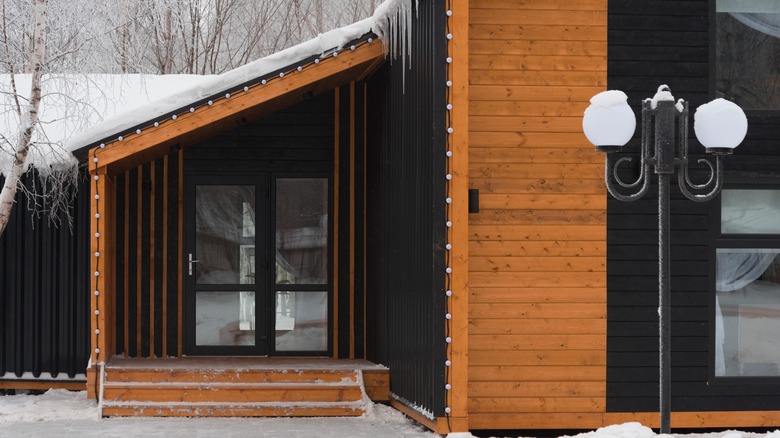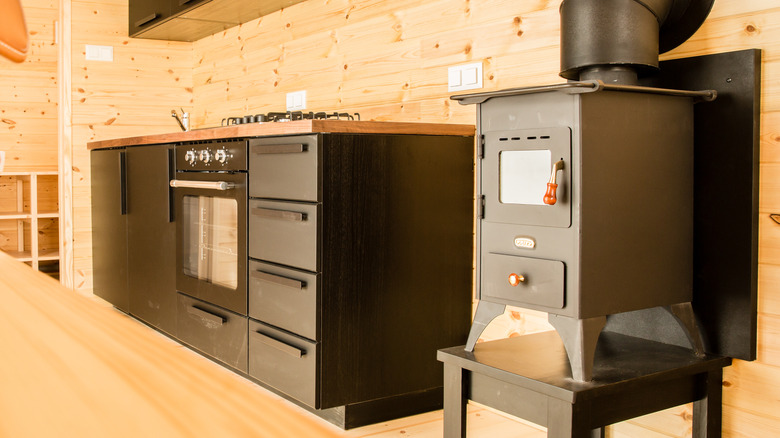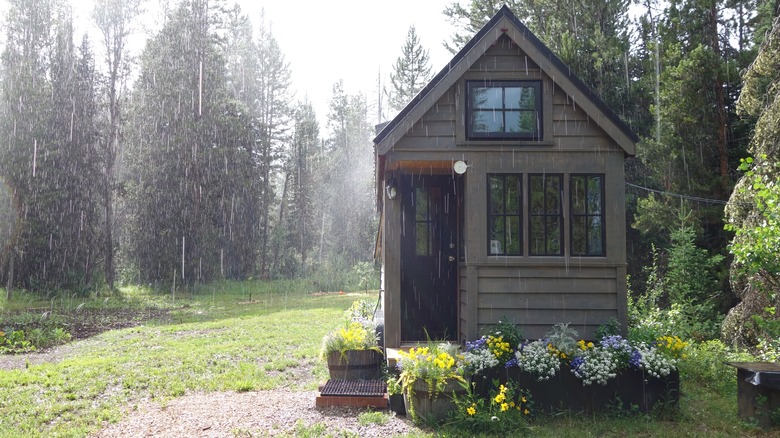Why You Should Keep Weather In Mind When Buying A Tiny House
If you know anything about tiny homes, you probably understand they're not all created equal. While some of these smaller abodes are sizable at 500 square feet, others are limited to 120 square feet. In the kitchen, certain models feature large appliances and more contain miniature versions. Of course, there are countless other differences, including bathroom designs, layout differences, and mobility considerations.
Because each of these features could drastically change your tiny home experience, it's important to conduct thorough research before buying a model. Something also to keep in mind when perusing options is the area's typical weather conditions. Not to mention, knowing how to properly heat, cool, and ventilate a mini home is imperative to thriving in any small space (via Quicken Loans). Some tiny houses are better equipped for drastic weather changes and severe storms, while others are not.
Below, you'll find more information about what to consider when it comes to heating, cooling, and severe weather. This information could help you make an informed decision on the right tiny home for you.
Heating and cooling considerations
Because tiny homes are much smaller than traditional single-family residences, they're typically less expensive and easier to heat and cool. However, because they don't offer enough space for a large furnace or air conditioning unit, you'll have to find alternative ways to heat and cool your home, according to Tiny Homes Pros.
Additionally, certain features can either make things easier or more difficult to regulate your home's temperature. For instance, lofted areas get extremely hot in humid weather and difficult to warm in cooler conditions, per Quicken Loans. In colder climates, designs with a sloped roof could be helpful, as the snow and ice will slide off. Plus, insulation in the walls, floors, and roof will create a warmer space as well, notes Tiny Homes Pros.
If you're not sure how to heat and cool your tiny house, Total Homes Supply recommends a mini-split system. While these units are more expensive than other options, they're also the most efficient. Alternatively, you can elect to go with an electric heater, a small fireplace, or a wood-burning stove to heat and an air conditioner or fans to cool your living space, respectively.
Severe weather considerations
In addition to the internal conditions, you should also keep the area's severe weather threats in mind when choosing the right tiny home. Learn to Live Small assures owners of tiny houses that these spaces are just as safe as single-family homes, as builders must adhere to the same building codes. However, certain models may come with extra precautions, and if they don't, you could add them later to make your home safer.
No matter where you choose to live, always get insurance and follow the guidelines for mobile home and RV safety, according to The Tiny House. Live in an area that's prone to tornados? Then find an option with an underground bunker or basement. You could also anchor your tiny home to the ground with steel rods, per The Tiny Life. Those who live in areas with hurricanes should buy a home with hurricane ties and shutters. And, if there's a threat of flooding, make sure there aren't any holes in the house's frame.
Of course, picking out a tiny home that's mobile would allow you to move to a safer area before any storm rolls in. This would also keep your home away from falling trees that would cause significant damage.


